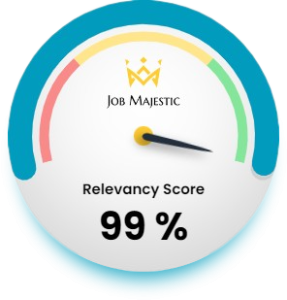HTML5 Interview Questions 101
Web development is crucial in this day and age as pretty much everything could be digitalised and online. HTML is an open-source technology (free for everyone) known as HyperText Markup Language, introduced by Tim Berners-Lee.
It is the very first technology used to create web pages and has now come far (HTML5), decades after the internet was born. Fun fact: HTML is also used in app development for mobile devices as well!
To illustrate how much has HTML evolved, HTML1.0 was the first release and had very limited usage for web development. The current version of HTML – HTML5, was introduced in 2008 to work with various types of devices such as monitors, tablets, and of course mobile phones.
If you are considering a career in web technology, you must learn HTML. Preparing to answer challenging web-development questions? Here’s Job Majestic’s guide on the common HTML5 interview questions you should know.
Basic HTML5 Interview Questions you should prepare for
1. What is the difference between HTML4 and HTML5?
Knowing the history of HTML is important for any web developer to appreciate the technology and utilise it to its fullest potential.
Here are some key differences between HTML4 and HTML5:
- HTML4’s DOCTYPE declaration was lengthy and refers to an external resource; HTML5’s is much simpler in comparison
- HTML4 does not have multimedia supporting tags; HTML5 introduced dedicated multimedia tags
- HTML4 is compatible with almost all web browsers; Unfortunately, HTML5 is not as compatible due to being a newer version
It’s important for you to showcase your expertise in this subject matter to assure hiring managers that you are suitable for the position.
2. What do you understand by <!DOCTYPE>? Name the types of DOCTYPE available in HTML5.
Answer for Part A: Every HTML5 web page starts with a <!DOCTYPE> declaration that is concise and case-insensitive. <!DOCTYPE> tells the web browser the information it must display to the end-user.
Answer for Part B: It’s a trick question because HTML5 only has ONE DOCTYPE available, which is <!DOCTYPE html>.
3. What do you understand by HTML5 Web Storage? Is it any better than Cookies?
In an intermediate-level question compared to question 1 above, you should demonstrate your understanding of HTML5 as a whole.
You could answer:
Before HTML5 was created, web data was stored locally within browsers using ‘Cookies’. HTML5 has enhanced web storage by allowing a web page to store data the same way as how Cookies do it – but faster, and more secure because the data is not included with every server request.
There are a few advantages of HTML5’s web storage compared to Cookies, the main ones being:
- ‘Cookies’ transfers data to the server while Web Storage never do so – which is more secure
- HTML5’s Web Storage limit is much higher than Cookies’ limit – from 5MB to 10MB
- Cookies keep track of all the website visits by a user – which is exposed to hackers as the data can be accessed by any third party (such as credit card details and even passwords)
4. How to optimise website assets, and why is it important to do so?
You may encounter more HTML5 interview questions that are more “Why” instead of “What”. In this case, you could answer:
Firstly, it is important to optimise website assets because doing so is crucial to help boost a website’s Search Engine Optimisation (SEO) performance, which can result in generating more quality leads. Ultimately, the main purpose of web development is for it to be widely seen and utilised.
To optimise website assets, we could use the techniques of:
- CDN Hosting
- File Compression
- File Concatenation
- Assets Offloading
- Re-organizing
- Code Refining
These techniques aim to reduce the download size and the total number of HTTP requests that are made, making the web page performs better. Provide more examples of each technique if you could to be more convincing.
5. What are the advantages of HTML5 and why is it important to us?
Lastly, companies may ask HTML5 interview questions that are closely related to the company’s operations and goals.
HTML5’s advantages include:
- It supports more multimedia formats such as animation, drawing, audio, video, etc
- It supports cleaner coding
- It easily embeds a video on the web page
- It has smarter web storage technologies
- It does not require Flash for watching videos
Relate these advantages to what the company is doing – whether it be enhancing their marketing efforts, or tightening web pages’ security for social responsibility purposes, you will need to ensure that your expertise would provide value to the company’s direction.
Final Remarks
Congratulations on making it this far! Truthfully, there are hundreds of HTML5 interview questions that you should know so take your time to explore and learn.
When answering these HTML5 interview questions, don’t just merely answer on a surface level – show your expertise by elaborating each answer with numbers and past experiences, as well as relating them to the company that you’re applying for.
If you haven’t applied for the best web development jobs in Malaysia, now’s the best time to visit Job Majestic and land your dream job easily.
![]()







